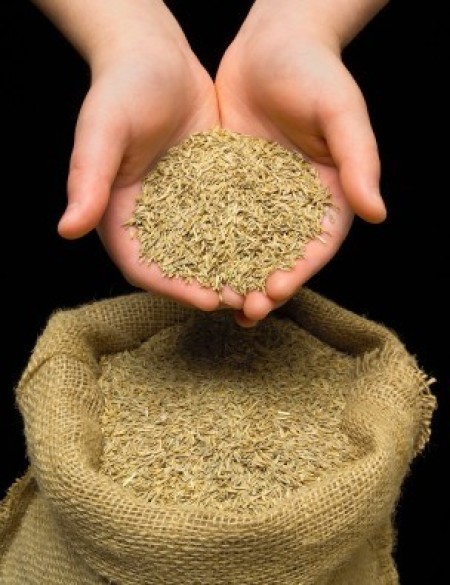
Seeding your lawn with low quality grass seed usually leads to disappointing results. A "one-size-fits-all" seed mixture can lead to soil erosion or even worse, leave your lawn vulnerable to a hostile takeover by weeds. So how do you recognize fine-quality grass seed? By learning to read and understand grass seed labels.
Before purchasing grass seed, you need to determine what type of grass species you want to plant. This answer depends largely on local site conditions (sun, shade, wet, or dry), the intended use of your lawn (e.g. recreational or aesthetic pleasure), and how much time and effort you're willing to spend on maintenance (mowing, fertilizing, watering, etc.). Because the performance of each grass species is geographically dependent, talk to a local nursery or county extension specialist to find out what types of grasses grow best in your area.
The ability to understand grass seed labels is critical to selecting good seed. The information on the label will help you determine the type, quantity, and quality of the seed in the bag. Here are some common label properties, their definitions, and their preferred, acceptable range:
Purity: This refers to the percent, by weight, of the pure seed of each component in the mixture. Preferred range is > 90%.
Variety/Kind: This refers to the species (e.g. perennial ryegrass) and specific cultivar ("Saratoga") the mix contains. If more than one type of grass is present, the label should list the common names of the grasses in order of their prevalence within the mix. In addition to listing individual species, the label must also provide the percentage by weight of pure seed of each species. Never buy seed that does not include the variety on the label. For example, Variety Not Stated (VNS) seed mixes may include certain older cultivars that are not well adapted to lawns.
Germination: This refers to the percentage of pure seed that has actually been tested and shown to germinate under controlled laboratory conditions. Consider it the germination rate that you can expect when the seeds are sown outdoors under ideal conditions. Preferred range is > 85%.
Other Crop Seed: The percent, by weight, of seeds in a package that are not the grass variety or species labeled, but are not technically considered weed seeds either. If the product contains more than 5% of the total weight in "other crop seed" those seeds must be listed by name. Preferred range is < 0.5%.
Weed Seed: The percent, by weight, of weed seeds in a package. A weed is any seed that has not been included in pure seed or "Other Crop Seed". Preferred range is < 0.3%.
Noxious Weeds: Noxious weeds are the number (per pound or ounce) of weed seeds that are present in the mix. The term "noxious weeds" refers to seeds considered noxious as defined by your state. Quality seed mixtures will contain NO noxious weeds.
Inert Matter: Inert matter is the percentage of material, by weight, that will not grow. This includes things like pieces of seed stalks and other plant debris. Preferred range is < 8 %.
Date Tested: The month and year the laboratory germination test was completed.
Seed Lot: The lot number is listed so that the product can be traced back to the original source of production should any problems arise.
Origin: The state in which the grass seed was grown.
Name and Address of Labeler: The party responsible for the contents of the seed bag.
Once you've determined which type of grass seed to grow, you need to determine how much seed to purchase. To do this, you'll need to measure the size of your lawn in square feet. If your lawn is irregularly shaped, try dividing it into measurable sections and then adding them together. Don't worry about calculating a precise amount, just try to get a pretty close estimate. Use this handy grass seed calculator as a guide. Just be sure to double check that the grass species it recommends is the correct type for your yard.

About The Author: Ellen Brown is an environmental writer and photographer and the owner of Sustainable Media, an environmental media company that specializes in helping businesses and organizations promote eco-friendly products and services.
Add your voice! Click below to comment. ThriftyFun is powered by your wisdom!